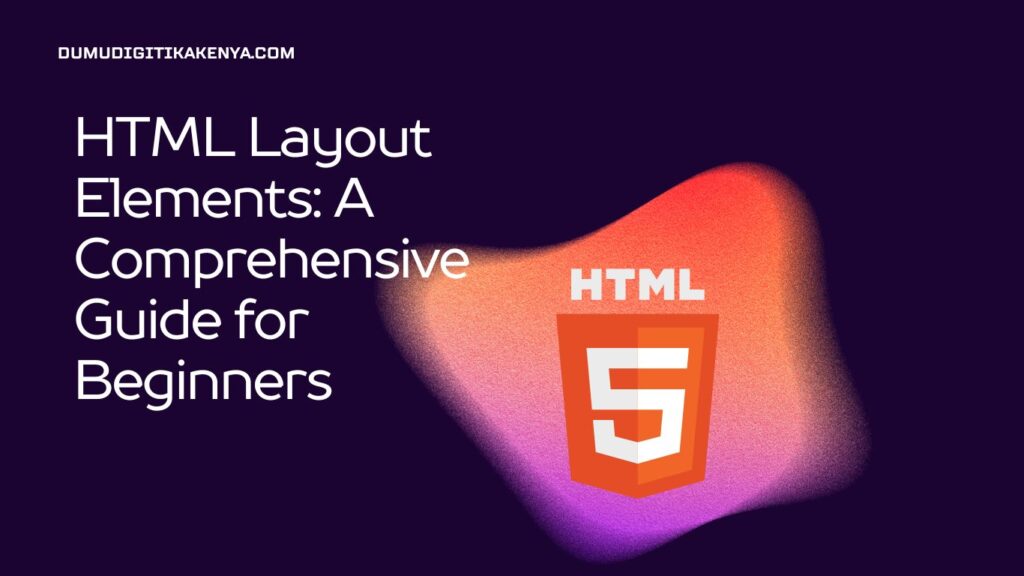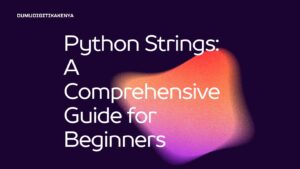Introduction To HTML Layout Elements and Techniques
Welcome to our comprehensive guide on HTML Layout Elements, where we’ll demystify the fundamental building blocks of web development. In the dynamic realm of the internet, understanding how to structure web content is the first step toward creating visually appealing and organized web pages. Whether you’re an aspiring web developer or simply curious about the foundations of web design, this tutorial is your gateway to mastering the art of HTML Layout Elements.
In this article, we’ll delve into the essentials of HTML layout elements such as divs, headings, paragraphs, and lists, providing you with step-by-step instructions and practical examples. You’ll discover how to harness the power of these elements to structure your web content logically and semantically. Along the way, we’ll also touch on styling techniques and best practices to ensure your web pages not only look great but also perform efficiently. By the end of this tutorial, you’ll be equipped with the knowledge and skills to create well-organized web pages, making your online presence shine in the competitive digital landscape. So, let’s embark on this exciting journey into the world of HTML Layout Elements!

Prerequisites
Before we dive into HTML layout elements, make sure you have a basic understanding of HTML syntax. If you’re new to HTML, you might want to check out our HTML Basics Tutorial first.
HTML Layout Elements
HTML provides several elements that help structure the layout of your web page. These elements allow you to organize content logically and semantically. Let’s explore some of the essential layout elements and techniques:
1. Div Element
The <div> element is a generic container used to group and style content. It doesn’t have any inherent styling or meaning but is crucial for organizing your page. Let’s create a simple example:
<!DOCTYPE html>
<html>
<head>
<title>HTML Layout Tutorial</title>
</head>
<body>
<div id="header">
<h1>Welcome to My Website</h1>
</div>
<div id="content">
<p>This is a sample paragraph within a div.</p>
</div>
<div id="footer">
<p>© 2023 MyWebsite.com</p>
</div>
</body>
</html>In this code, we have used three <div> elements to structure the header, content, and footer sections of a web page.
2. Headings
HTML provides six levels of headings, from <h1> (the highest) to <h6> (the lowest). Headings help define the hierarchy and importance of content. Here’s an example:
<h1>Main Heading</h1>
<h2>Subheading 1</h2>
<h2>Subheading 2</h2>
<h3>Sub-subheading</h3>3. Paragraphs
The <p> element is used to define paragraphs of text. It automatically adds spacing before and after the text:
<p>This is a sample paragraph.</p>
<p>Another paragraph follows.</p>4. Lists
HTML supports two types of lists: ordered and unordered. Ordered lists are created using <ol>, and unordered lists are created using <ul>. List items are defined with <li>:
<ul>
<li>Item 1</li>
<li>Item 2</li>
<li>Item 3</li>
</ul>
<ol>
<li>First</li>
<li>Second</li>
<li>Third</li>
</ol>5. Adding Styles
You can style your layout elements using CSS (Cascading Style Sheets). Create a separate CSS file or use inline styles with the style attribute:
<div id="header" style="background-color: #3498db; color: #fff;">
<h1>Welcome to My Website</h1>
</div>6. Comments
You can add comments to your HTML code to provide explanations or reminders. Comments are not visible on the webpage:
<!-- This is a comment -->Putting It All Together
Let’s combine these elements to create a simple webpage:
<!DOCTYPE html>
<html>
<head>
<title>My First Web Page</title>
<style>
#header {
background-color: #3498db;
color: #fff;
text-align: center;
}
#content {
margin: 20px;
}
#footer {
background-color: #3498db;
color: #fff;
text-align: center;
padding: 10px;
}
</style>
</head>
<body>
<div id="header">
<h1>Welcome to My Website</h1>
</div>
<div id="content">
<h2>About Us</h2>
<p>We are a web development tutorial website.</p>
<h2>Services</h2>
<ul>
<li>HTML</li>
<li>CSS</li>
<li>JavaScript</li>
</ul>
</div>
<div id="footer">
© 2023 MyWebsite.com
</div>
</body>
</html>Conclusion
In closing, this tutorial has provided you with a solid foundation in understanding and utilizing HTML Layout Elements effectively. From the versatile <div> element to the hierarchical headings and well-structured paragraphs and lists, you’ve gained valuable insights into the core elements that define the structure of a web page. Armed with this knowledge, you can confidently organize your web content, improving both user experience and search engine optimization (SEO) rankings.
Remember that HTML Layout Elements are just the beginning of your web development journey. As you continue to explore the intricacies of web design, you’ll discover more advanced layout techniques, responsive design principles, and the power of Cascading Style Sheets (CSS) to further enhance the visual appeal and functionality of your web pages. So, keep experimenting, stay curious, and never stop learning. With dedication and practice, you’ll become a proficient web developer, capable of crafting stunning and user-friendly websites that truly stand out in the digital landscape. Thank you for joining us on this enlightening journey into the world of HTML Layout Elements.


